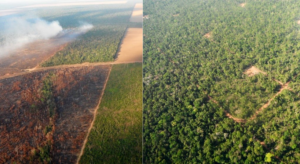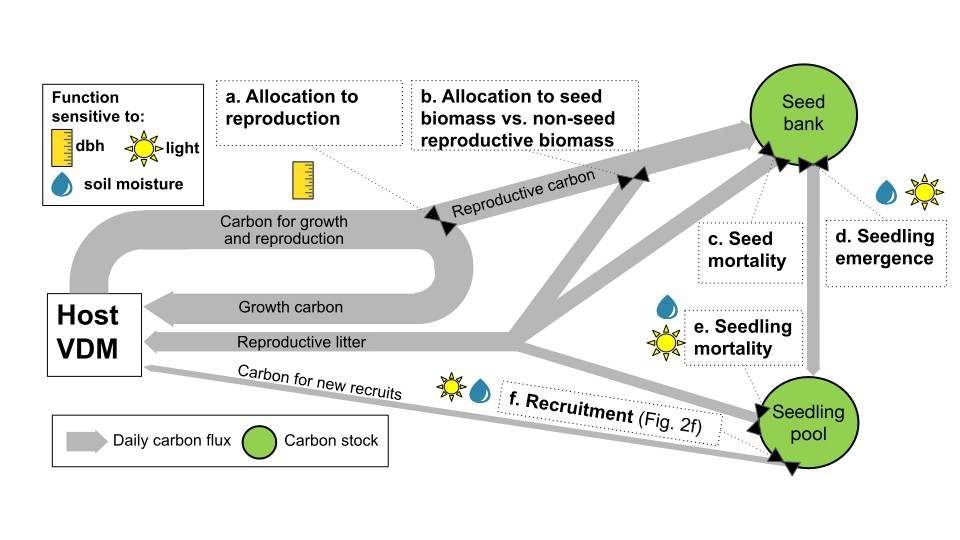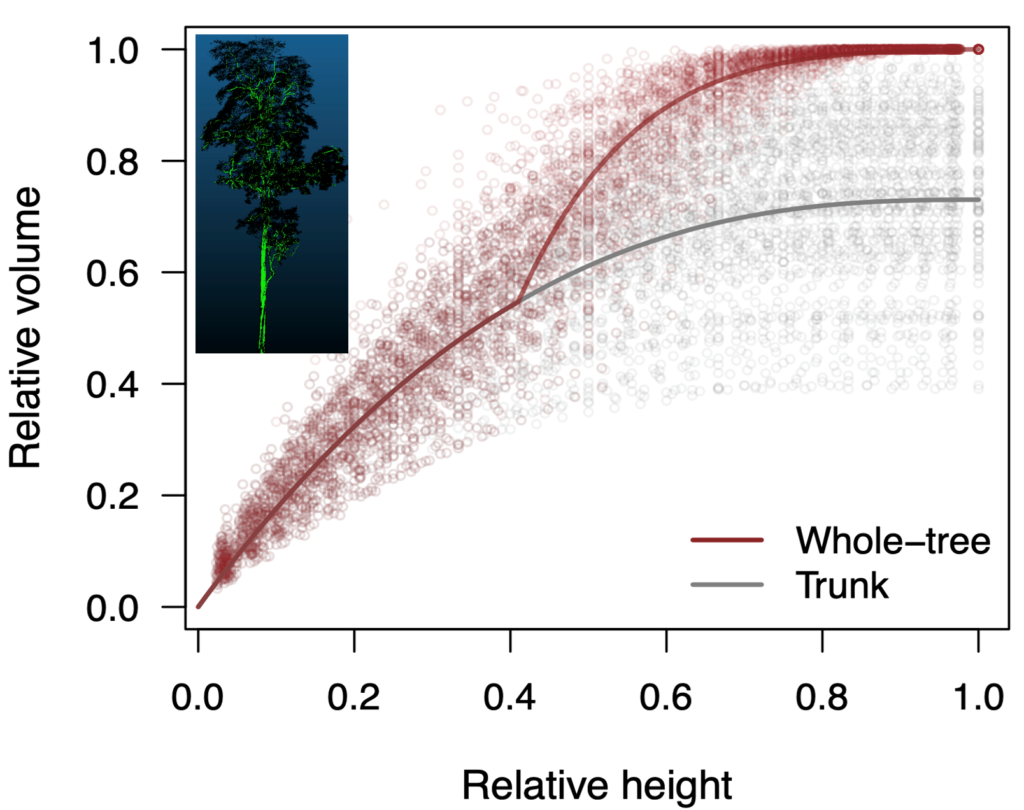Are Earth system models representing forest regeneration well enough?
The Science
Forests will only persist where future trees are able to reproduce, disperse, germinate, and grow into mature trees (i.e. “recruit”). These critical regeneration processes are generally not well represented in the models that ecologists use to predict future forests. We critically reviewed how regeneration processes are represented within models that strive to predict forest demography in Earth system models. We found a need to improve parameter values and algorithms for reproductive allocation, dispersal, environmental filtering in the seedling layer, and tree regeneration strategies adapted to wind, fire, and anthropogenic disturbance regimes. These improvements are needed so that models can capture forest responses to global change.
The Impact
Vegetation demographic models represent forest dynamics in the Earth system. They provide the opportunity to more fully integrate ecological understanding into predictions of future climate and ecosystem states. This paper identifies critical areas where models are not prepared to Forest regeneration is a series of environmentally sensitive processes that culminates in tree recruitment. Environmental variables act as filters (depicted as varying sieve mesh sizes) that impose constraints on each process capture future forest responses to global change variables such as changing precipitation and disturbance regimes. This review helps model developers identify what kinds of improvements are needed. It also helps field ecologists understand what types of data are best suited to supporting the improvement of models. Improving these models will advance our ability to predict the role that forests will play in sequestering and storing carbon, providing habitat for biodiversity, and provisioning critical natural resources for people.
Summary
Earth system models must predict forest responses to global change in order to simulate future global climate, hydrology, and ecosystem dynamics. These models are increasingly adopting vegetation demographic approaches that explicitly represent tree growth, mortality and recruitment, enabling advances in the projection of forest vulnerability and resilience, as well as evaluation with field data. To date, simulation of regeneration processes has received far less attention than simulation of processes that affect growth and mortality in spite of its critical role maintaining forest structure, facilitating turnover in forest composition over space and time, enabling recovery from disturbance, and regulating climate-driven range shifts. Our critical review of regeneration process representations within current Earth system vegetation demographic models reveals the need to improve parameter values and algorithms for reproductive allocation, dispersal, seed survival and germination, environmental filtering in the seedling layer, and tree regeneration strategies adapted to wind, fire, and anthropogenic disturbance regimes. These improvements require synthesis of existing data, specific field data collection protocols, and novel model algorithms compatible with global scale simulations. Vegetation demographic models offer the opportunity to more fully integrate ecological understanding into Earth system prediction; regeneration processes need to be a critical part of the effort.

Contact: Adam Hanbury-Brown, University of California, Berkeley, ahanburybrown@gmail.com
Funding
Funding was provided via Next Generation Ecosystem Experiments-Tropics (NGEE-Tropics), funded by the US Department of Energy, Office of Science, Office of Biological and Environmental Research. The lead author also received support from the National Science Foundation and the National Aeronautics and Space Administration during this research.
Publication
Hanbury-Brown AR, RE Ward , LM Kueppers (2022), Forest regeneration within Earth system models: current process representations and ways forward. New Phytologist. https://doi.org/10.1111/nph.18131




